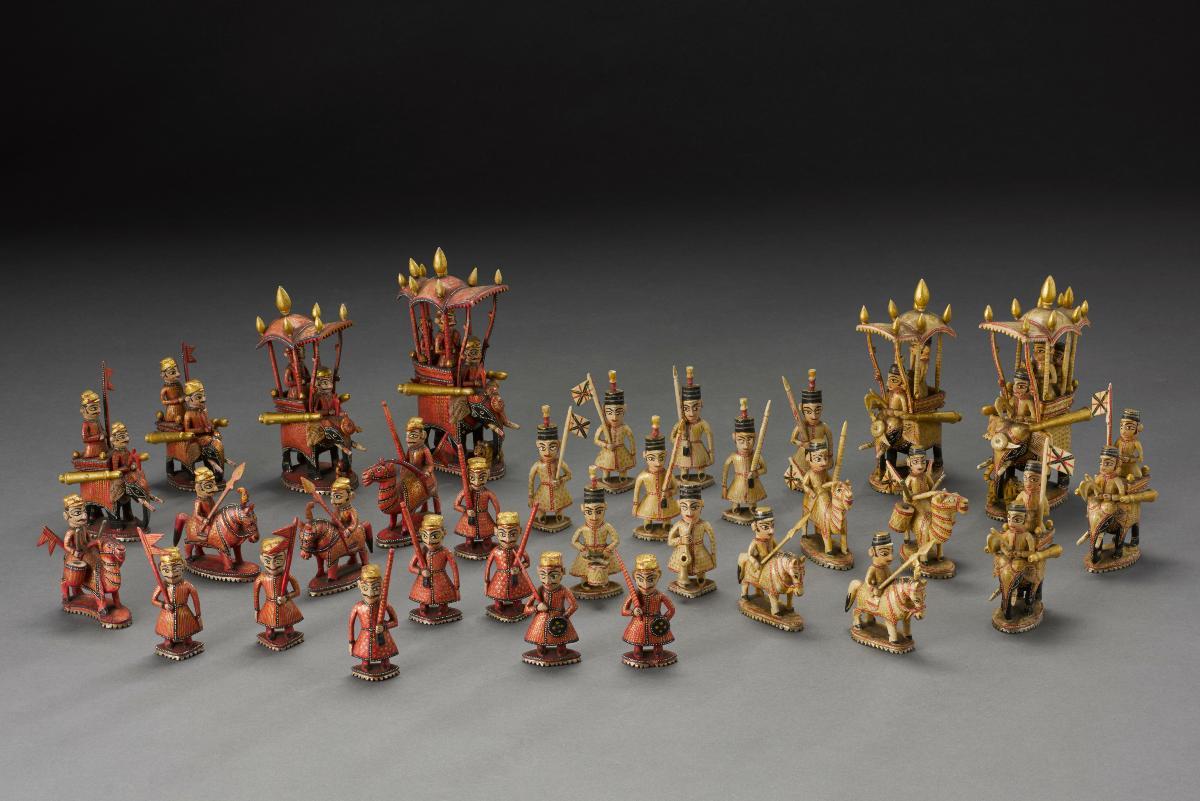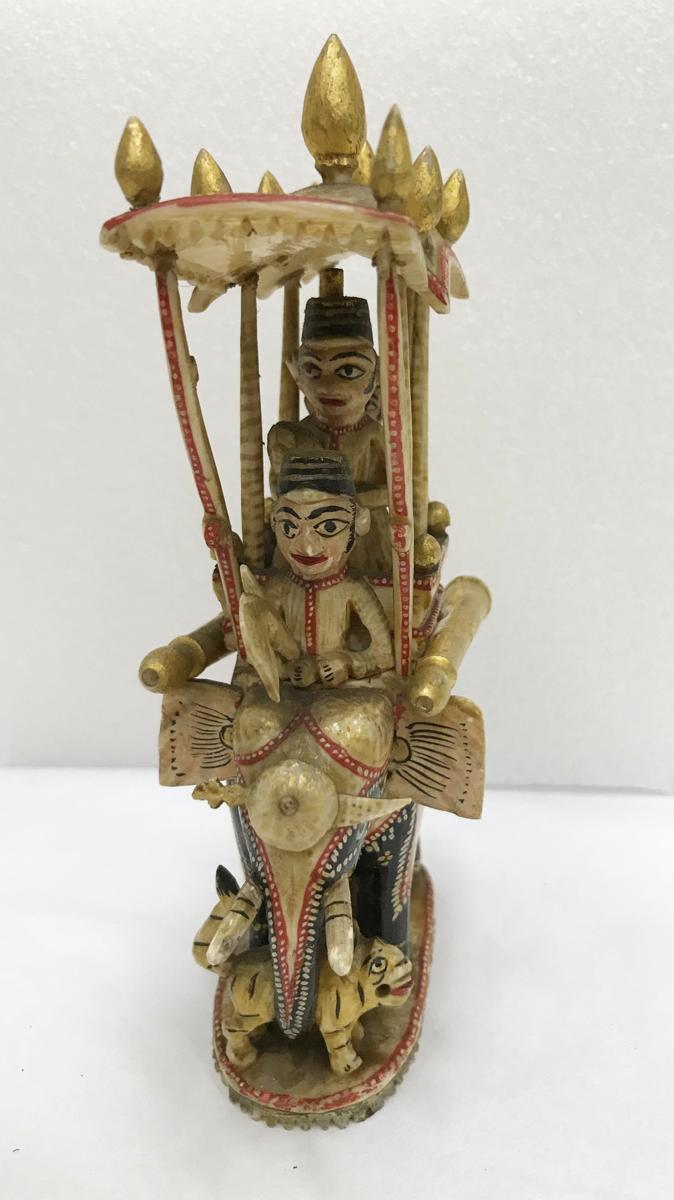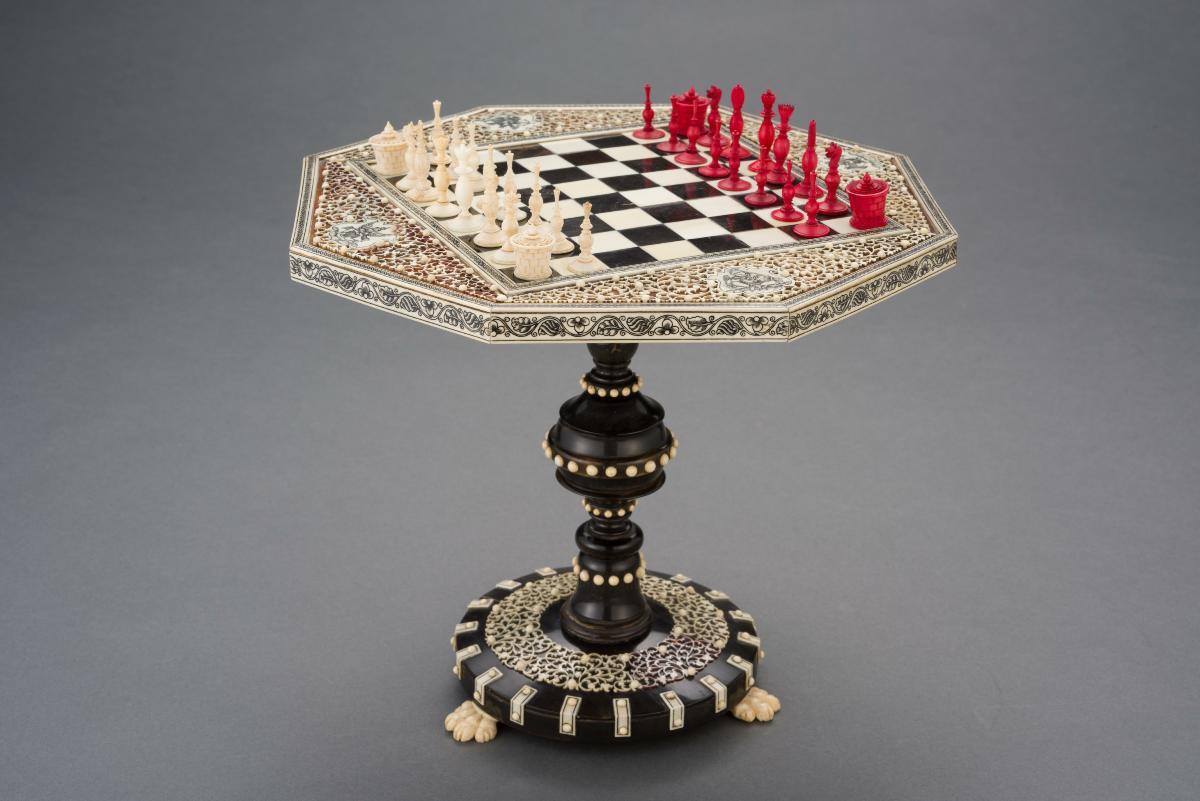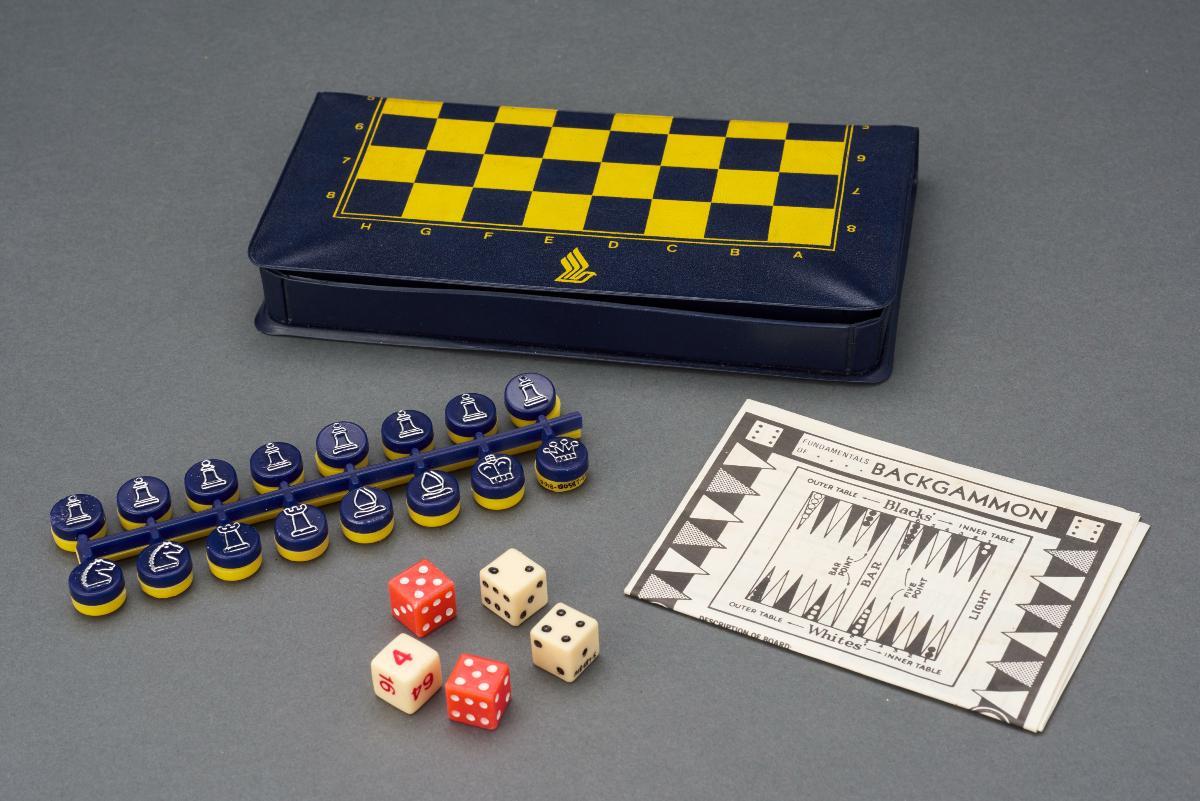Traditional Indian toys and games are a reflection of the everyday world reproduced in miniature. They were produced for the purposes of play, education and aesthetic appreciation, and serve as a bridge between the inner (fantasy) and outer (reality) worlds of children. Traditionally, these toys and games were handmade using common materials such as wood, paper and cloth although some were made of more luxurious materials such as ivory and silver for nobility and royalty as well as for export. It is interesting to note that several modern day games had their origins in India and they include the game of chess which is derived from chaturanga; Snakes and Ladders which is known as gyan chaupar in the north or paramapadam in the south; and Ludo which is evolved from the ancient game of pachisi.During the colonial period, handcrafted game boards for chess and pachisi produced in India were highly sought after in Europe as diplomatic gifts or objects of display. This is a complete set of rare mid 19th century painted ivory figural chess sets showing the costumes of traditional Indian and British militia in the 19th century.The set depicts offiers of the British East India Company versus Indian forces, one side predominantly cream, the other side mostly red. The chess pieces have been decorated with gilt highlights, and painted details on ivory.















